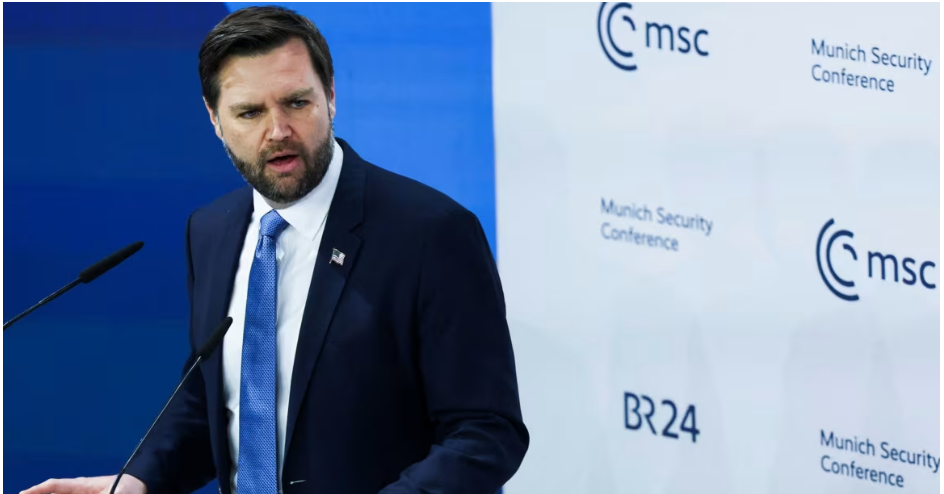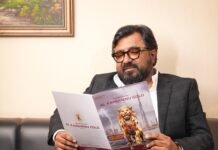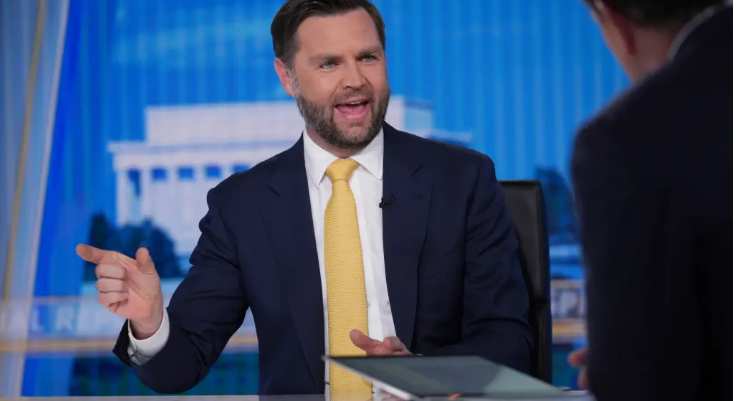
A wave of international concern is spreading after a bold statement from UK Foreign Secretary David Vance, who claimed that Iran’s uranium stockpile may be “buried” or hidden, raising alarms around the world. The declaration came amid growing uncertainty over missing nuclear fuel and increased global scrutiny of Iran’s nuclear program. Speaking at a major international security summit, Vance explained that mounting evidence suggests Iran could be concealing enriched uranium in unknown or underground locations, making it difficult for global watchdogs to track their nuclear progress.
Vance’s warning has intensified global anxiety, especially among members of the United Nations Security Council and the International Atomic Energy Agency (IAEA), which has already reported inconsistencies in Iran’s uranium tracking. The implications of hidden uranium are severe, as it may indicate Iran’s silent progress toward building a nuclear weapon, a scenario many nations have feared for years.
Cracks in Transparency: Iran’s Nuclear Program Under Scrutiny
Iran’s nuclear journey has long been a subject of suspicion and controversy. Although the 2015 Joint Comprehensive Plan of Action (JCPOA) offered hope by establishing limits on Iran’s nuclear enrichment and allowing IAEA inspectors access to facilities, trust has diminished significantly. After the United States withdrew from the JCPOA in 2018, Iran gradually moved away from its obligations. According to the latest IAEA reports, Iran has enriched uranium up to 60% purity, alarmingly close to the 90% required for weapons-grade uranium.
What’s more troubling is that inspectors have repeatedly faced limited access to Iranian facilities. The IAEA confirmed that its cameras were disconnected, monitoring equipment was turned off, and data that was once regularly shared has now disappeared. These gaps in information have only deepened suspicions, and Vance’s assertion about “buried uranium” gives new weight to those fears.
What Does “Buried” Uranium Mean?
The word “buried” used by Vance triggered intense speculation in the diplomatic and intelligence communities. Some interpret it as literal, suggesting that Iran could be hiding physical stockpiles of uranium in underground bunkers, possibly located in military zones or deserts. Others view it as a metaphor for intentionally misleading international bodies by failing to report actual levels of enriched uranium.
If either interpretation holds true, it could mean that Iran is preparing itself for a nuclear breakout, keeping enriched uranium aside in safe, hidden places until it’s ready to take the next step toward weaponization. This theory is deeply worrying to countries like Israel, the United States, and Saudi Arabia, which see Iran’s nuclear ambitions as a direct threat to regional and global peace.
Iran Pushes Back: “Baseless and Politically Motivated”
Unsurprisingly, Iran reacted strongly to Vance’s statement. A spokesperson from the Iranian Foreign Ministry dismissed the remarks as “baseless and politically motivated”, accusing the UK of fear-mongering and trying to derail Iran’s peaceful nuclear efforts. The statement read, “Iran has always cooperated with the IAEA and remains committed to peaceful nuclear energy. We reject all accusations that we are hiding uranium or violating international laws.”
Iran maintains that its program is strictly for civilian purposes, such as electricity generation and medical research. Yet, the fact remains that its recent actions — from restricting inspections to enriching uranium beyond agreed levels — contradict those peaceful claims. With the lack of transparency, trust is eroding quickly.
Vance’s Statement: A Wake-Up Call for the Global Community
Foreign Secretary Vance’s comments are seen by many experts as a strategic warning, not just to Iran but also to the international community. He stated, “There’s growing evidence that Iran may have hidden portions of its enriched uranium. If true, this poses a significant threat to international stability. We fear that some of this stockpile may already be buried in locations where inspectors can’t reach.”
His remarks have pushed other nations to reevaluate their current diplomatic strategies. Many Western powers now believe that more aggressive action may be needed to prevent Iran from achieving nuclear capability. The debate has shifted from “if” Iran is pursuing nuclear weapons to “how far along” it may already be.
Echoes Around the World: International Reaction Grows
The United States, France, and Germany have all expressed support for Vance’s concerns. A U.S. State Department spokesperson noted, “We share the UK’s fears about Iran’s lack of transparency. The global community cannot afford to take these threats lightly.” Similarly, France called for an emergency review of Iran’s nuclear operations, while Germany urged for the restoration of full IAEA access.
Meanwhile, Israel, Iran’s fiercest regional rival, took the warning very seriously. Israeli Defense Minister Yoav Gallant stated, “Iran is deceiving the world. If they have hidden uranium, that’s a red line. Israel will act in its defense.” Speculation about military action or cyberattacks has started resurfacing, hinting at a potential escalation in Middle East tensions.
In contrast, Russia and China, both long-time allies of Iran, called for diplomatic patience and warned against any military escalation. Their stance remains that the only way forward is through negotiation and mutual respect, although their credibility as neutral brokers is now under question.
The Middle East on Edge: Regional Ramifications
The fear of a nuclear-armed Iran has long destabilized the Middle East. Should Iran be proven to have concealed its uranium stockpile, neighboring countries such as Saudi Arabia, the UAE, and Egypt may feel compelled to pursue their own nuclear capabilities, triggering a regional arms race. This scenario would not only threaten regional peace but could spiral into a global security crisis.
Already, these countries are investing heavily in defense and military alliances. Saudi Arabia, in particular, has deepened its ties with the U.S. and European defense firms and hinted at developing peaceful nuclear energy programs, which many see as a veiled threat to match Iran’s capabilities if needed.
IAEA’s Critical Role and Challenges
The International Atomic Energy Agency (IAEA) finds itself at the center of this unfolding crisis. As the global watchdog for nuclear safety, its job is to inspect, verify, and report on the nuclear programs of member countries. However, IAEA officials have voiced concern over Iran’s growing resistance to inspections.
IAEA Director General Rafael Grossi recently commented, “We are deeply concerned about the gaps in our monitoring. Without full cooperation from Iran, we cannot guarantee that its nuclear program is peaceful.” The agency has requested immediate reinstallation of monitoring equipment and unrestricted access to all enrichment facilities. So far, Iran has not responded favorably to these requests.
Sanctions and the Question of Effectiveness
In response to Iran’s defiance, economic sanctions are once again being considered. Sanctions have been the primary tool used by the West to deter Iran from progressing with its nuclear ambitions. But while they have weakened Iran’s economy, many experts believe they have failed to stop uranium enrichment or bring about long-term behavioral change.
Foreign Secretary Vance acknowledged this challenge and proposed a multi-pronged strategy: “Sanctions alone aren’t enough. We need strong diplomacy, united global pressure, and if necessary, the implementation of new containment strategies to prevent Iran from acquiring nuclear weapons.”
What Lies Ahead: Urgency for Action
The next few weeks are critical. The IAEA is expected to release a comprehensive new report that could provide fresh insights into Iran’s activities. Diplomatic discussions may also resume, either to revive the JCPOA or formulate a new nuclear deal that includes stricter verification measures.
In the meantime, pressure is mounting on Iran to come clean. The world is demanding answers, transparency, and cooperation. Without them, the risk of military confrontation or regional destabilization becomes dangerously real.
The revelation that Iran’s uranium may be buried or hidden signals a deepening crisis. Whether meant literally or figuratively, the idea underscores a dangerous lack of trust and severe risk to international peace. Vance’s warning isn’t merely diplomatic posturing — it’s a call for urgent action to address one of the most pressing nuclear threats of our time.
As the international community grapples with this potential nuclear flashpoint, one thing is clear: the world cannot afford silence or inaction. Whether through diplomacy, sanctions, or coordinated enforcement, efforts must now focus on ensuring transparency, enforcing accountability, and avoiding a catastrophic outcome.































